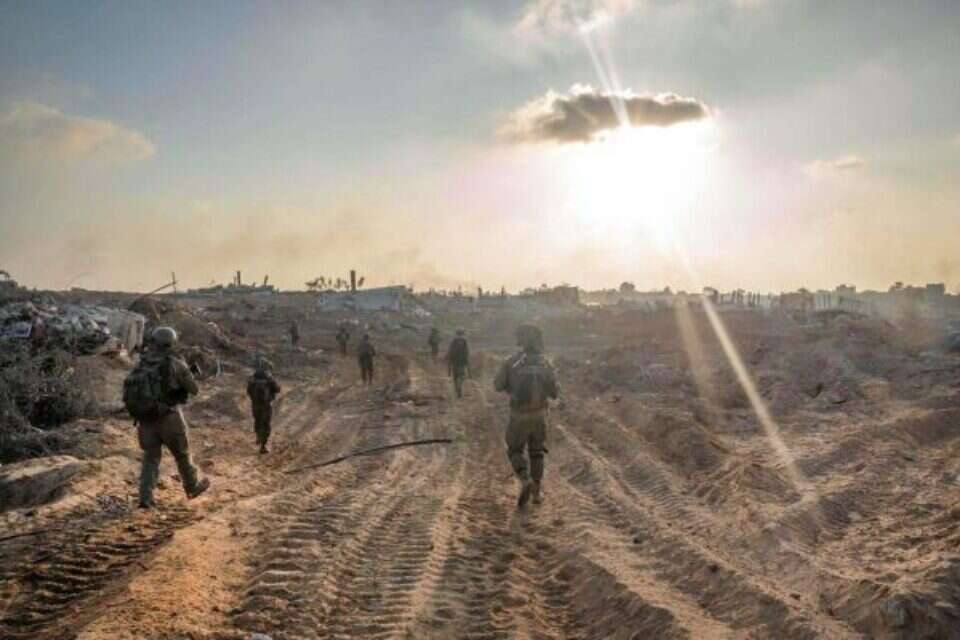Military academies around the world will teach two chapters related to the events of October 7 and the Iron Sword War. The first chapter will deal in depth with the unimaginable failure: intelligence, operational, and political. The second chapter will deal with inter-corps, multi-branch and multi-dimensional warfare, accompanied by excellent combat intelligence. There is no army in the world today that has reached this level.
In the opening situation of the transition from failure to offensive, heavy "weights" weighed heavily on the IDF the terrible trauma of October 7, the unimaginable intelligence and operational failure, and the humiliation that accompanied it. Many noted the IDF's recovery from the opening situation. I argue that this is not a recovery but a planned process, which includes, inter alia, a new doctrine, a different and advanced organization of the ground army, advanced technology, excellent intelligence, an advanced fire operation concept and dedicated training.
IDF Chief of Staff and ISA Chief of Staff at Hamas Tunnels in Khan Yunis // Photo: IDF Spokesperson
About a year and a half ago, I was invited to watch a General Staff exercise. In this framework, we were presented with the doctrine, the structure and organization of the forces, the inter-corps and multi-branch integration, and operational intelligence, which descends "in zero time" to the forces fighting in the field. I mention this in order to illustrate to the readers that everything we see today in the fighting is not coincidental and is not recovery and improvisation, but rather a prolonged process of adapting the IDF to the challenges of the complex Middle Eastern arena.
Yes, even some gaps cry out to the sky. the clear emphasis on lethal and planned offensive moves in the face of an inconceivable gap in dealing with defense doctrine; A screaming gap in the perception of alert on the contact lines and the aid forces available if necessary, suffice it to see the failure in the "alert at dawn" exercise, on which all IDF commanders grew up throughout the generations. and a gap in preparations for fighting in the tunnels, even though there has been substantial progress in this regard compared to the past.
Integration in the Ground Army
I grew up in single-corps units. Once or twice a year we received a sub-unit from another corps for brief cooperation. This anachronistic concept has been replaced by a structure of brigade combat teams, CSCs and CSCs, which include all components of combined combat (infantry, armor, engineering, Yahalam, artillery, intelligence that descends into the field, and close air coordination). These combat teams train together, get to know each other and learn the best synergy. In the new structure, the soldier identity of the commander of the combat team is less important. An armored commander or infantry commander is able to perform the same tasks, making optimal use of the components of the combined combat team.
IDF Attacks in South Lebanon // IDF Spokesperson
In addition, we see the flourishing of the engineering and armored units - the engineering battalions, the D-9 that became the star of the war and the amazing Yahalam unit. Today, the engineering battalions are under the command of the armored brigades in routine and training, which has dramatically improved their integration into the campaign. In addition, the armor reassumed its role as the leader of the maneuver, with impressive firepower and advanced armor.
Intelligence in combat
The intelligence failure in the warning cries out to the sky. However, Military Intelligence prepared itself for unprecedented integration (on the world level) in combat. The fighting in the Gaza Strip is characterized by operational intelligence that is available and saves lives. Military Intelligence has built intelligence agencies with amazing capabilities. Moreover, there are cases where a message from an intelligence desk to a battalion or brigade in the field warned them of an immediate threat around the corner.
Fire activation
During the war, we were exposed to the weight of fire. This is not just a request intended for a specific fire unit, but a built-in system that allows the allocation of firefighters in zero time to assist forces in the field. Fire centers know how to carry out optimal allocation of means, which produces a decisive contribution. We were exposed to aircraft fire support at distances of dozens of meters from our forces, compared to hundreds of meters in the past.
Quality of commanders
Blessed are these from our commanders! Mature, skilled, multi-tasking and determined commanders. Another amazing phenomenon is senior reserve commanders who are assigned (sometimes voluntarily) to assist serving brigade commanders. Brigadier General (res.) Avi Peled was the Golani brigade commander in Cast Lead in 2009, while Col. Yair Plai, the current brigade commander, was a major in the Egoz unit. Today, Avi Peled is Yair Plai's Chief of Staff. This phenomenon significantly increases the command's capabilities in combat.
technology
Here, too, unprecedented progress has taken place. In 2006, there was criticism that commanders clung to plasma screens at the back. In 2023, plasmas are in the weapons. Command and control systems provide an integrative picture of the situation, facilitating combat, coordination and exhaustion of force.
And despite all the changes and achievements they help bring - not everything is perfect. There are, of course, many gaps and lessons learned, which will be dealt with at the end of the war.
Wrong? We'll fix it! If you find a mistake in the article, please share with us

